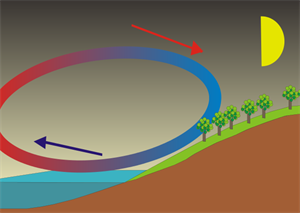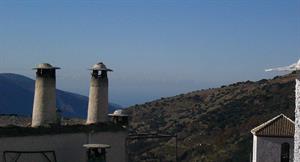PDF chapter test TRY NOW
Water molecules at the bottom of the beaker absorb heat energy, move upward, and replace molecules at the top in this activity. In the air, the same thing happens. When air is heated, heat energy is gained by the air molecules, allowing them to move further apart. Warm air rises because it is less dense than cold air. Cooler air descends to take the place of the rising air. It warms, rises, and is replaced by cooler air, resulting in a circular flow.
Hot air balloons:
The air molecules at the bottom of the balloon are heated and rise as a result of the heat source. Cold air is pushed downward as warm air rises, and it is heated as well. When the hot air is trapped inside the balloon, it rises.
Breezes:
There are two types of breezes, they are
- Sea breeze
- Land breeze
Sea breeze:
The air in contact with the land becomes hot and rises during the day. It has now been replaced by the cool air rising from the sea's surface. It is known as a sea breeze.

Sea breeze
Land breeze:
The air above the sea is warmer at night. Cooler air above the land moves towards the sea as the warmer air above the sea surface rises. It is known as a land breeze.

Land breeze
Winds:
Air flows from a high-pressure area to a low-pressure area. Warm air molecules rise over a hot surface, resulting in low pressure. As a result, cooler high-pressure air flows towards a low-pressure area. This results in the wind flow.
Chimneys:
Kitchen and industrial furnaces have tall chimneys. The hot gases and smoke rise higher in the atmosphere because they are lighter.

Chimneys
Reference:
https://commons.wikimedia.org/wiki/File:Sea_Land_Breeze.svg
https://en.wikipedia.org/wiki/File:Bubion_chimneys.jpg
